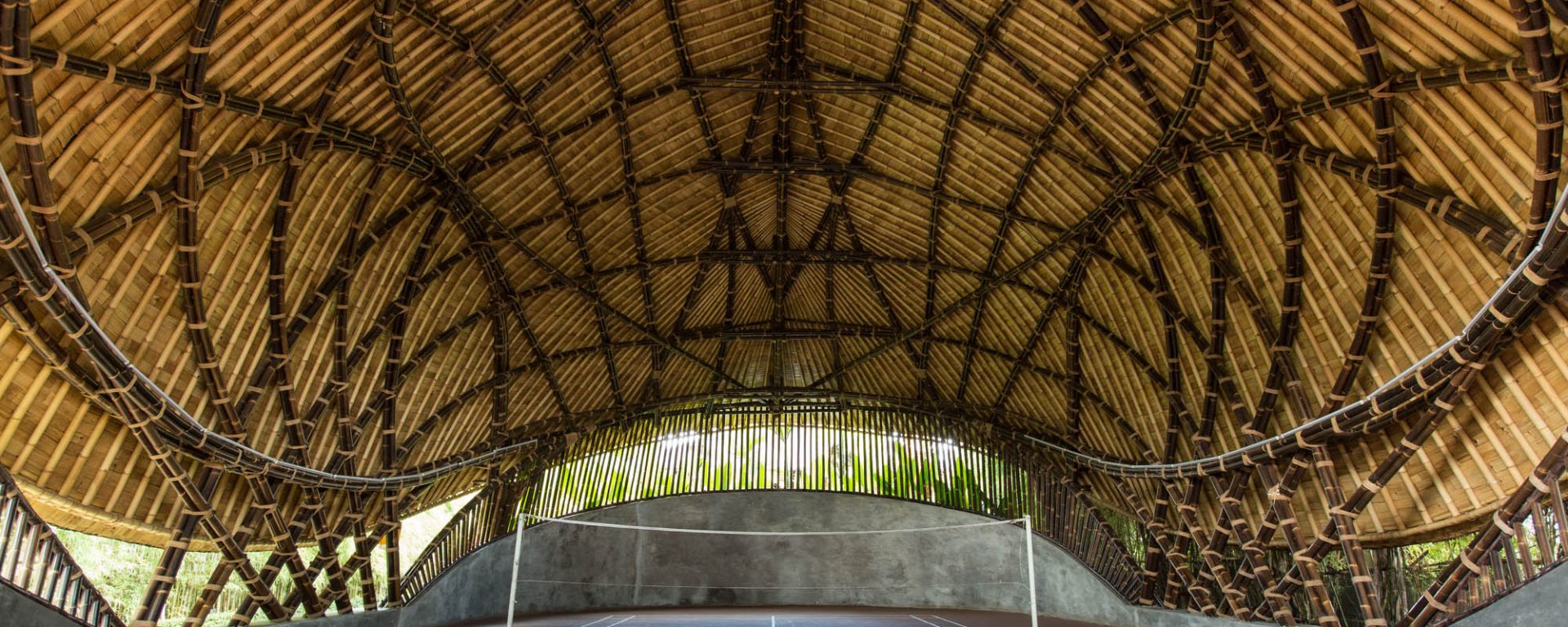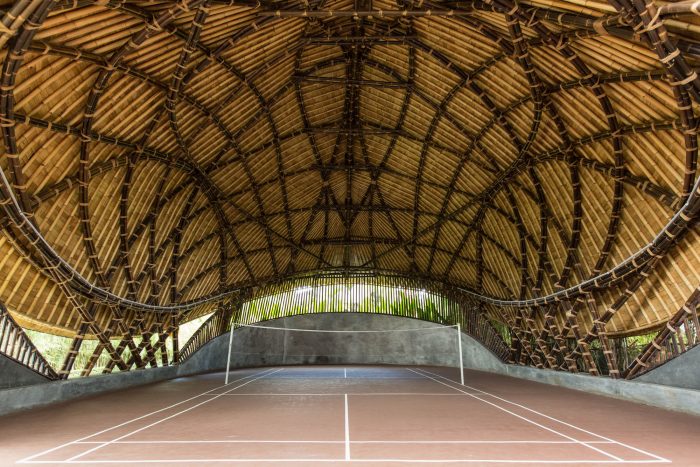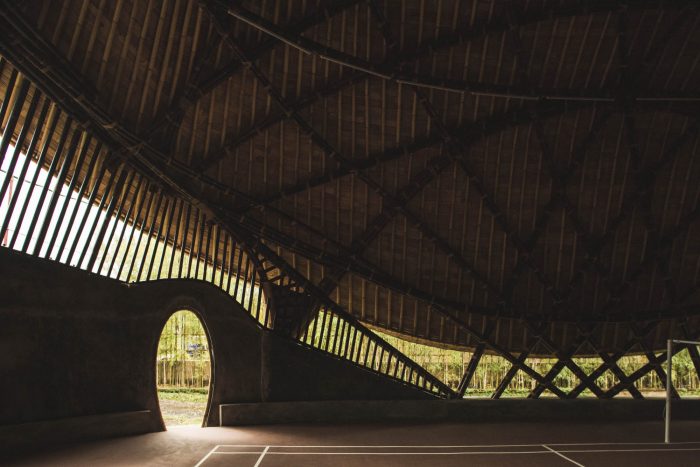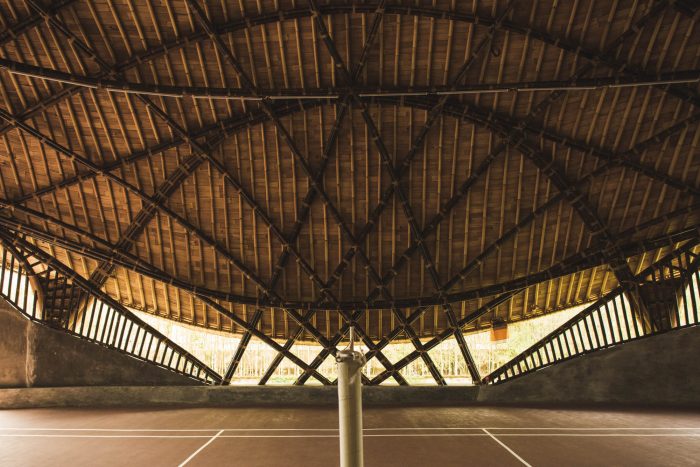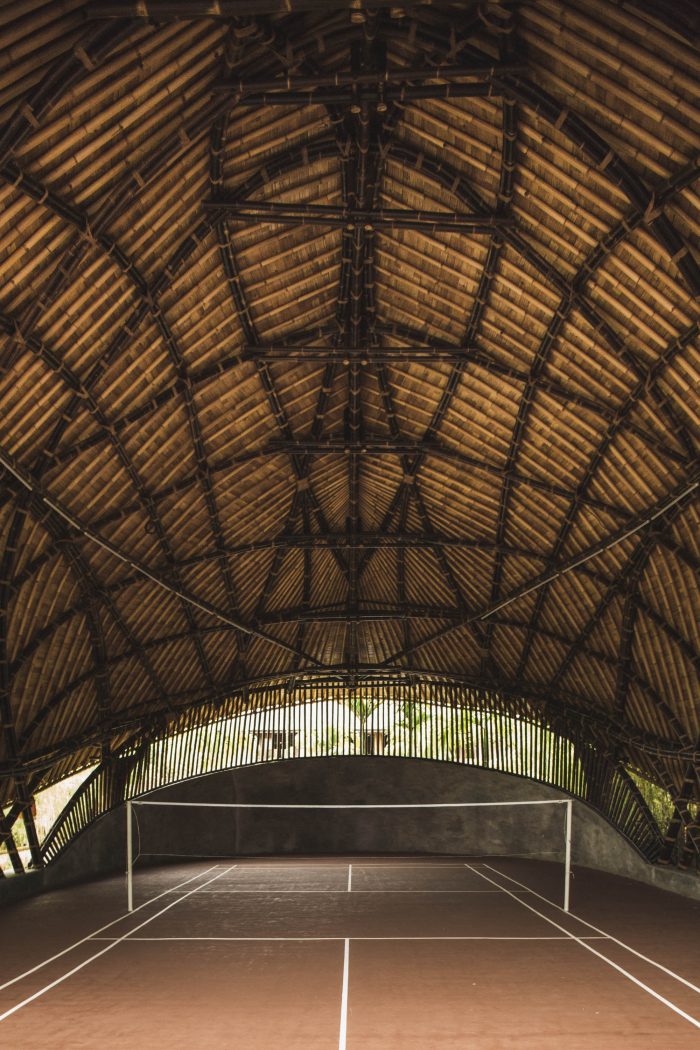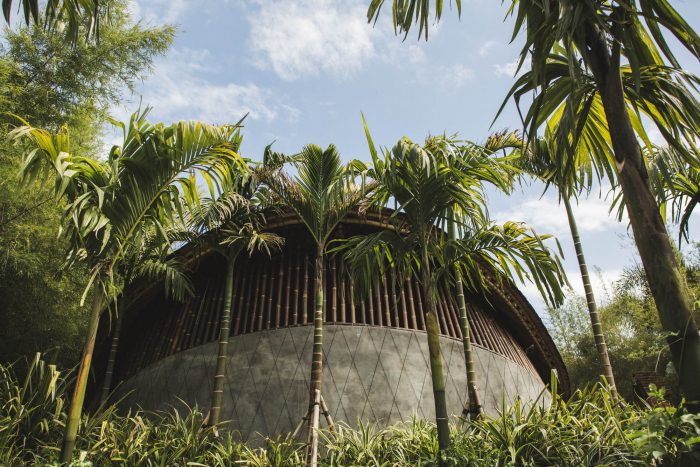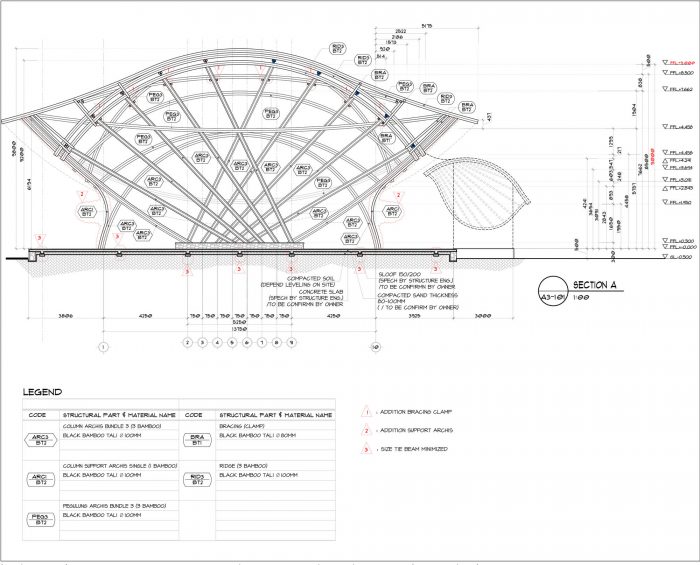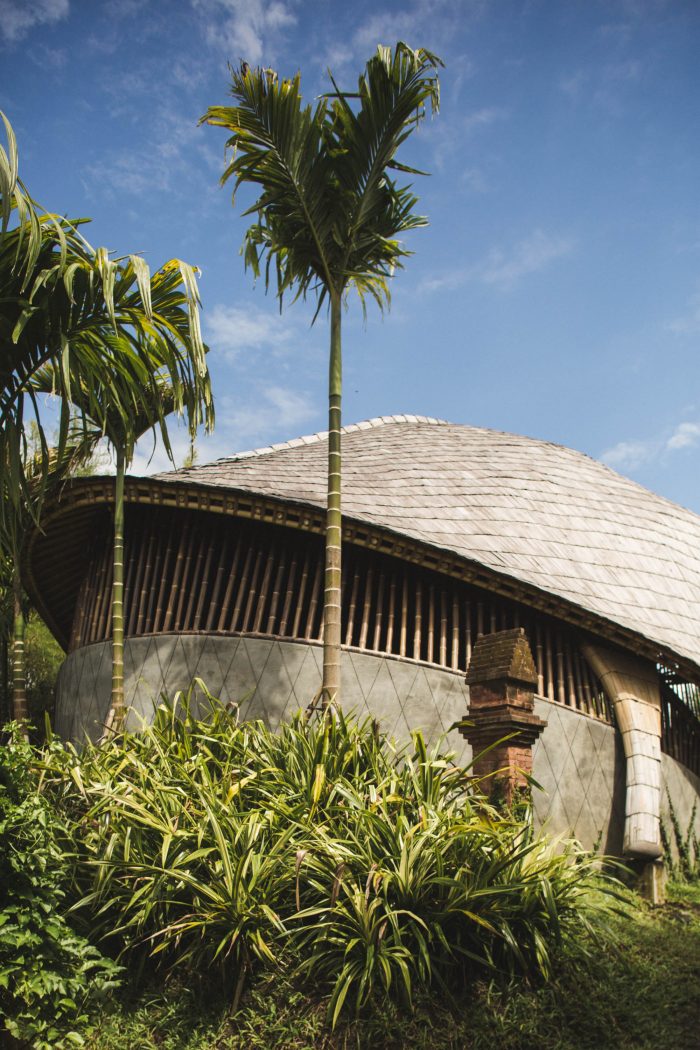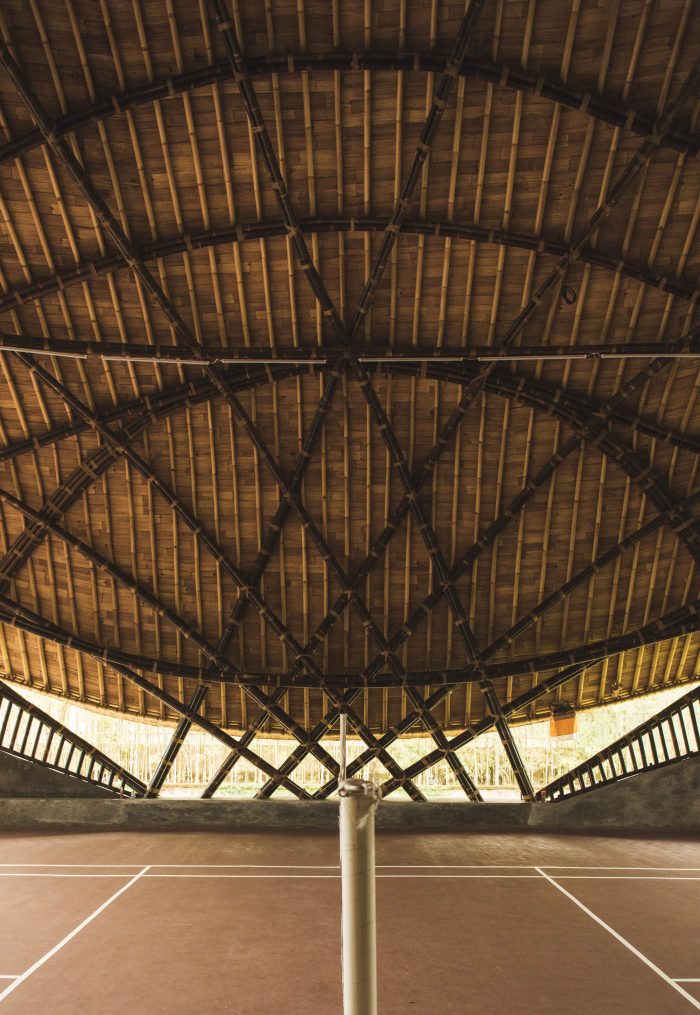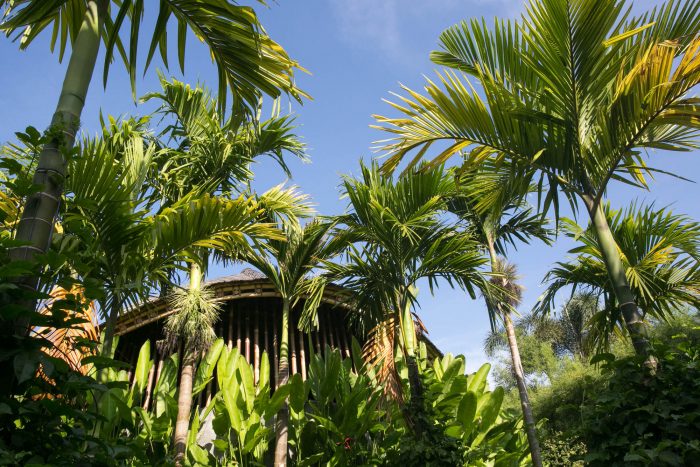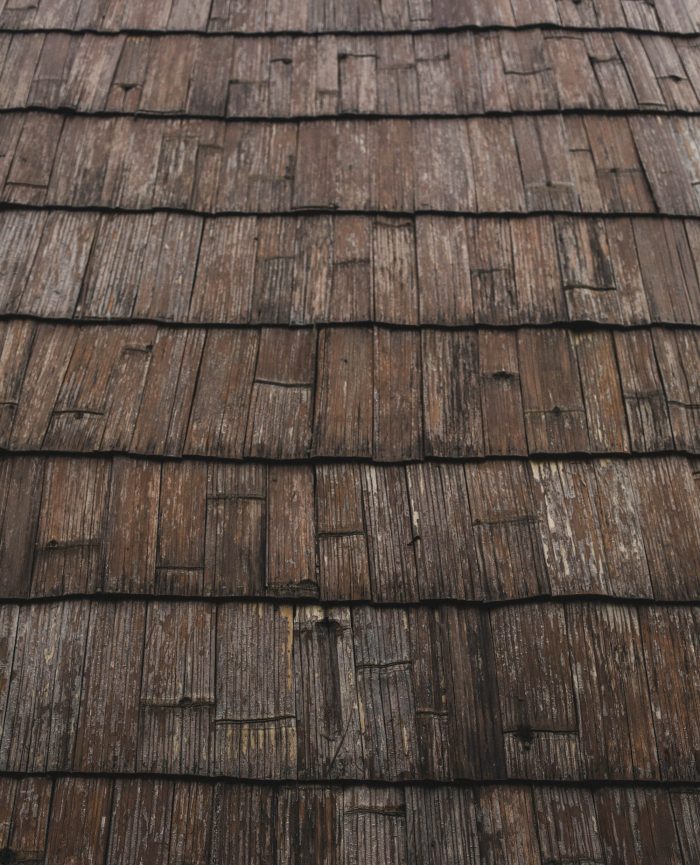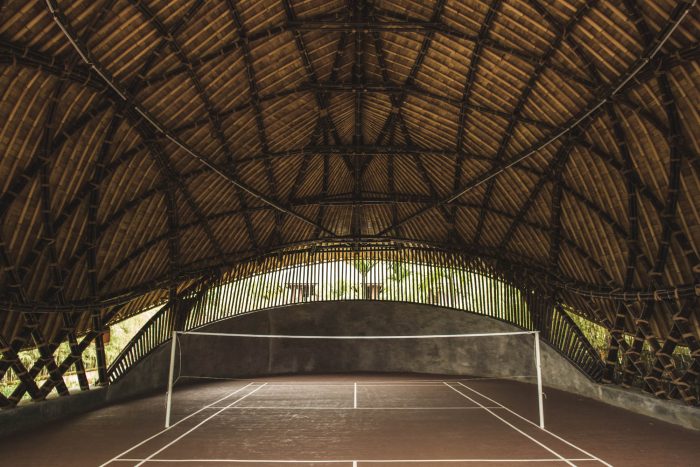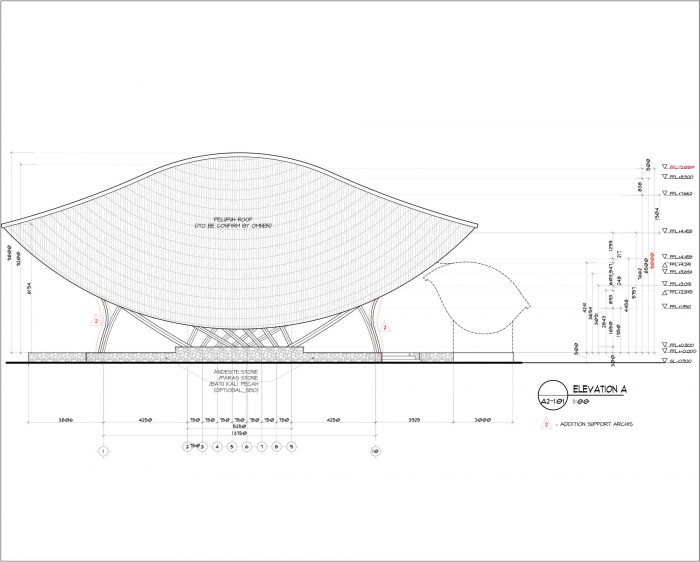建立Kura Kura的最初概念始于Studio Jencquel,作为他们开发的一个更大的房地产项目(Rumah Hujan Estate)的一部分。工作室有一些空闲的土地,靠近街道,并且没有用于 “房间”。 他们看到了一个机会,这些东西也将在街道和酒店的客人居住区之间形成一道屏障或缓冲。
The initial concept to build Kura Kura started with Studio Jencquel as part of a larger real estate endeavor that they had developed (Rumah Hujan Estate). The studio had some spare land that was close to the street, and unused for “rooms”. They saw the opportunity to build something that would also create a barrier or buffer between the street and the guest living areas of the property.
土地太小,不适合建网球场,于是Maximillian Jencquel决定建立一个羽毛球场。在印尼,这是一项全国性的运动,所有的孩子都会在学校里学习如何打球,因为印尼的专业水平竞争非常激烈。由于自己从未从事过这项运动,他开始研究、了解专业球场所需要的限制条件。
The land was too small for a tennis court, so Maximillian Jencquel decided to create a badminton court. It is a national sport in Indonesia and all kids learn how to play it in school as there is a very competitive professional level in the country. Having never practices the sport himself, he started to research, and understand the constraints that are needed for a professional court.
其中之一是建筑的形状与旋翼机的飞行有关。轨迹是抛物线,需要最低9米的高度净空,这是相当高的要求。Maximillian Jencquel不希望建筑像一个高大的盒子一样在附近突出,所以采用旋翼机飞行轨迹的形状似乎是一个明显的选择。这意味着该建筑将拥有大胆的曲线。
Among them was the shape of the building in relation to the flight of the shuttle cock. The trajectory is parabolic and needs a minimum height clearance of 9m, which is quite high. Maximillian Jencquel didn’t want a building that would stand out in the neighborhood like a tall box, so caressing the shape of the trajectory of the shuttle cock flight seemed to be the obvious choice. This meant the building would have bold curves.
虽然建造这样的形状可以考虑很多材料,但从预算、时间和地理位置来看,明显的选择是使用竹子。因此,工作室的好朋友、来自IBUKU的Elora Hardy被邀请来设计一个符合这些要求的结构。这时IBUKU团队提出了主要的形式。
Though many materials can be considered for building such a shape, the obvious choice for budget, time, and geographical location, was to use bamboo. Elora Hardy from Ibuku, a good friend of the studio was therefore approached to design a structure following these requirements. This is when IBUKU team came up with the main form.
两间办公室在竹子的选择上进行了合作,想法是将黑色和金色的竹子进行对比。在IBUKU设计结构的同时,Jencquel工作室也参与了决策过程,包括将屋顶线条延伸到几乎触及地面,阻止主导风进入建筑,同时保持所需的空气流通,让热量排出建筑。
The two offices collaborated on the choice of bamboo, the idea being to contrast the black and blond bamboo. While IBUKU designed the structure, Studio Jencquel was involved in the decision making process including extending the roof lines to almost touch the ground and stop dominant winds from entering the building while still maintaining the needed air circulation which allows heat to exit the building.
建筑师: IBUKU, Studio Jencquel
占地面积:300 m²
年份:2016年
摄影:Tommaso Riva
国家:印度尼西亚
Architects: IBUKU, Studio Jencquel
Area: 300 m²
Year: 2016
Photographs: Tommaso Riva
Country:Indonesia

